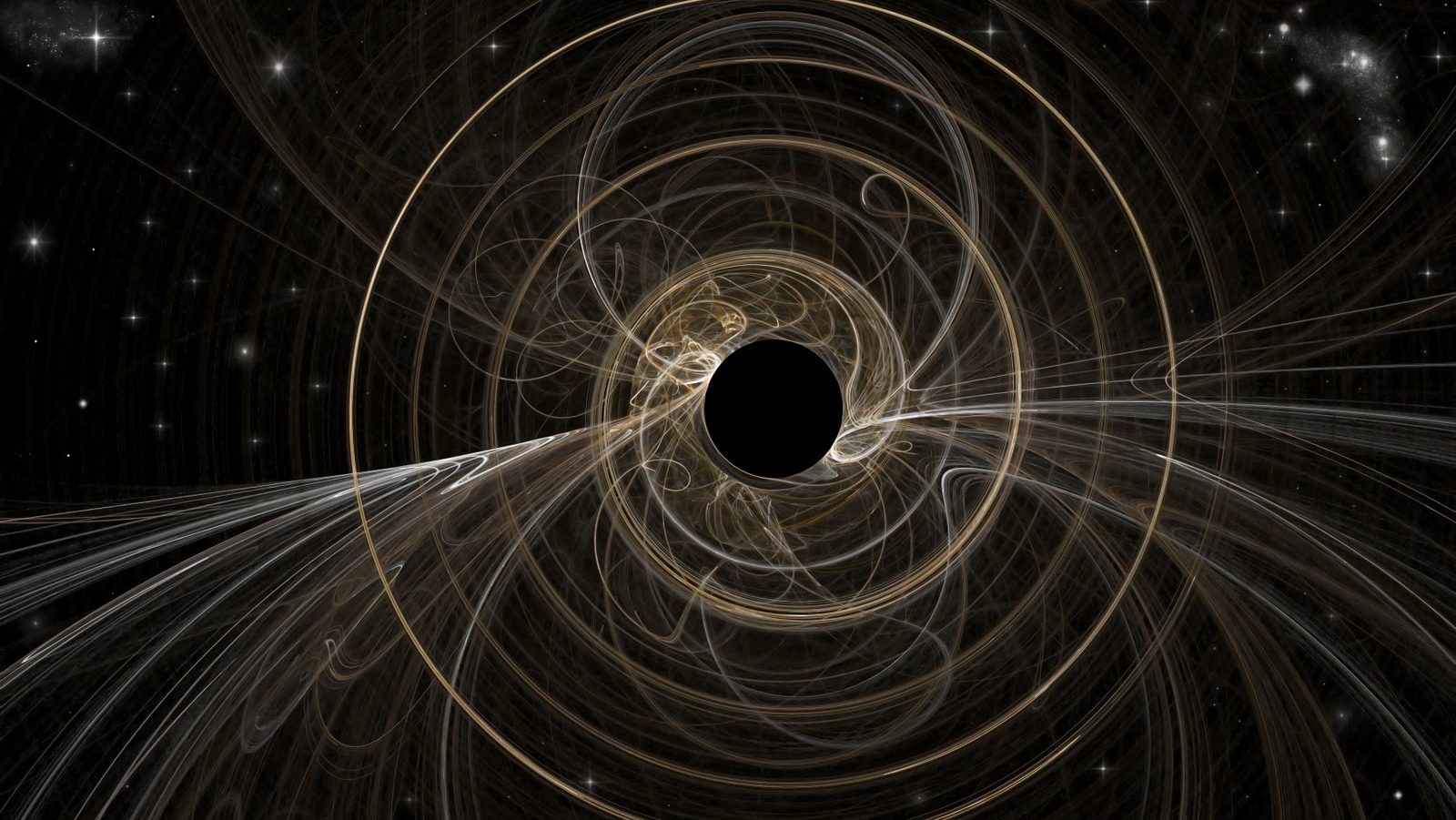LIGO’s Successor Approved; Will Discover Incredible New Sources Of Gravitational Waves
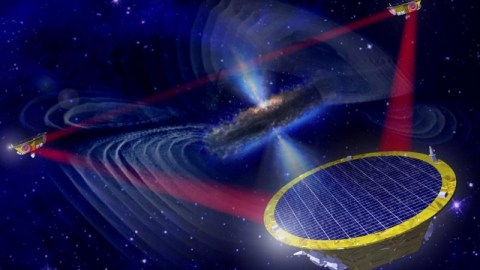
Meet LISA, the Laser Interferometer Space Antenna. Yes, it’s giant LIGO, in space, and it’s happening!
“Einstein’s gravitational theory, which is said to be the greatest single achievement of theoretical physics, resulted in beautiful relations connecting gravitational phenomena with the geometry of space; this was an exciting idea.” –Richard Feynman
Three times over the past two years, LIGO has directly detected gravitational waves: the ripples in spacetime created as accelerating masses change their position in a gravitational field. Every set of massive motions in a back-and-forth, periodic manner creates these ripples, whether it’s a human moving their fists outward from their chests, a spinning pulsar undergoing a starquake, a supernova explosion, or two masses orbiting each other. While LIGO is most sensitive to detecting the gravitational waves from binary black holes in the final stages of inspiraling and merging, the fact is that any mass orbiting any other creates these same waves, and that the overwhelming majority of orbits take much longer than the fractions-of-a-second that LIGO is sensitive to. That’s what LISA, the Laser Interferometer Space Antenna, is designed to detect. And yesterday, in an incredible announcement, the European Space Agency has decided to officially add LISA to its roster of missions, announcing a launch date of 2034.
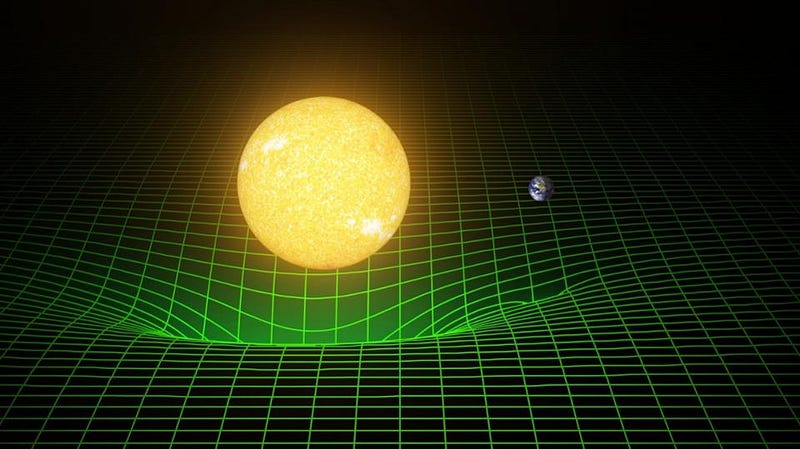
Even our Earth orbiting the Sun emits gravitational waves. The problem with lower masses and larger distances is that the emitted waves are tremendously weak, creating very small, practically undetectable signals. This is a good deal for Earth, which will take 10150 years to spiral into the Sun owing to the energy radiated away by gravitational waves; they carry away too little energy to affect our orbit in any way that matters. But any pair of orbiting masses will create, on timescales corresponding to the period of an orbit, ripples in space that compress-and-stretch the dimensions of anything it passes through.
The basic premise of LIGO is as simple as it gets: build the greatest vacuum chamber in the world, many kilometers long, and fire a laser down it. Perpendicular to it, build another, identical one, and split the laser so that half the light goes down this new arm, while half goes down the original. Reflect the light back down the path, perhaps setting up multiple reflections (LIGO uses around a thousand) to artificially increase the sensitivity of the detector, and then reconstruct the light at the end. As the arm lengths change due to passing gravitational waves, the interference pattern of the reconstructed light changes, allowing us to detect the effects of gravitational waves.
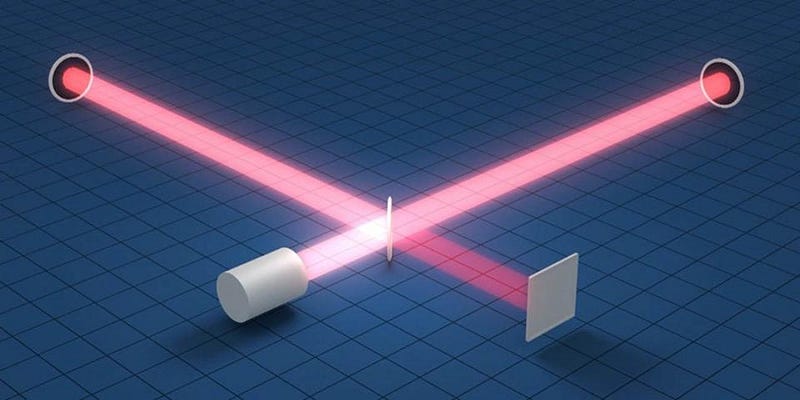
At its current sensitivity and size, LIGO can detect the final stages of inspiraling-and-merging black hole-black hole pairs. With planned advances toward its ultimate design sensitivity (which are now in jeopardy thanks to NSF cuts), LIGO could potentially detect merging neutron star-neutron star pairs as well. But in order to detect larger systems, like objects orbiting and falling into supermassive black holes, you need longer laser-arms and to eliminate seismic noise. There’s a plan for that: go to space.
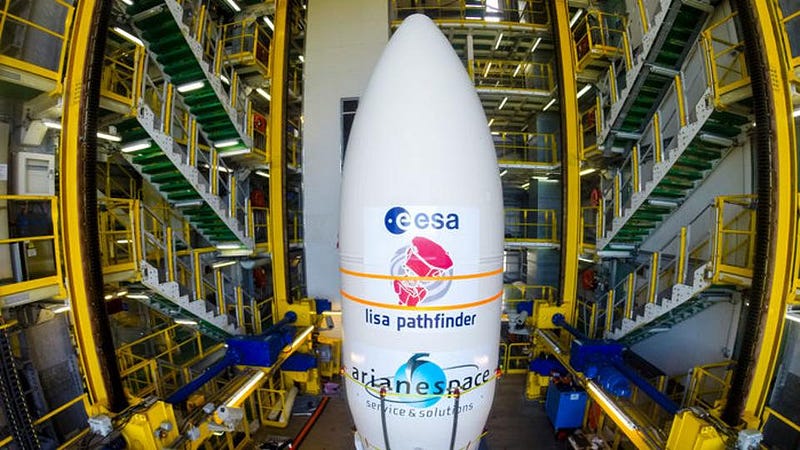
The incredible success of the LISA Pathfinder mission demonstrated that putting masses up in space — in gravitational free-fall — and firing lasers between them would give every bit as precise a measurement as doing it here on Earth. Only in space, there are three tremendous advantages.
- You don’t need to artificially create a vacuum; the vacuum of space is free, and better than anything we can create on Earth.
- You no longer have to contend with seismic noise; without trucks, trains, human activity, earthquakes or even plate tectonics, the largest source of noise is summarily removed from the experimental apparatus.
- And you are not limited by the size and curvature of the Earth for the size of your laser arms. In fact, you can vastly exceed the size of the Earth in terms of what you can measure.

The basic idea of LISA is to fly three spacecraft in formation, with all three of them in orbit behind the Earth. Even though the spacecraft will drift over time, the fact that they are in gravitational free-fall means we’ll be able to calculate — and account for — those effects. Because it has much longer laser arms, it will be sensitive to much longer time periods, and therefore to objects that have lower-frequency signals. Rather than looking for objects that complete orbits in matters of milliseconds, it can look for those with periods of seconds, minutes, hours, or even longer.

Sure, LIGO, with its short arms, may be the best tool for rapidly inspiraling and merging objects, like black hole or neutron star pairs in the final stages of merging. But an observatory like LISA could help you identify these objects long before the final fraction-of-a-second of merger; it could help you see them months or years in advance. When the orbital distances are thousands of kilometers away from their center-of-mass, these slowly inspiraling objects would make a periodic signal that LISA would be exactly sensitive to. It may even be able to get white dwarf-white dwarf systems: the precursors to one type of Type Ia supernova. For the first time, we could predict a merger like this in advance, on timescales where we could observe the cataclysmic event directly.
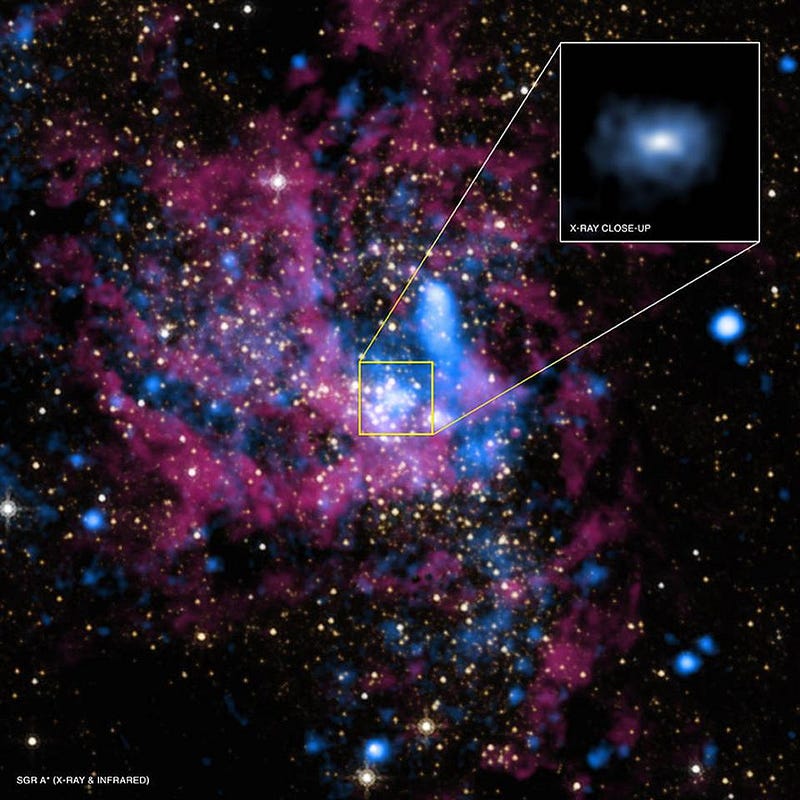
The huge advance of LISA, though, will be the ability to detect objects spiraling into and merging with the supermassive black holes at the centers of galaxies. Stars and other forms of matter are constantly falling into black holes at the galactic center, both in our own galaxy and well beyond. These events often result in the ejection of matter, the acceleration of charged particles and the emission of radio and X-ray light. But they should also result in the emission of gravitational waves, and LISA will be sensitive to those. For the first time, we’ll be able to see supermassive black holes in gravitational waves.
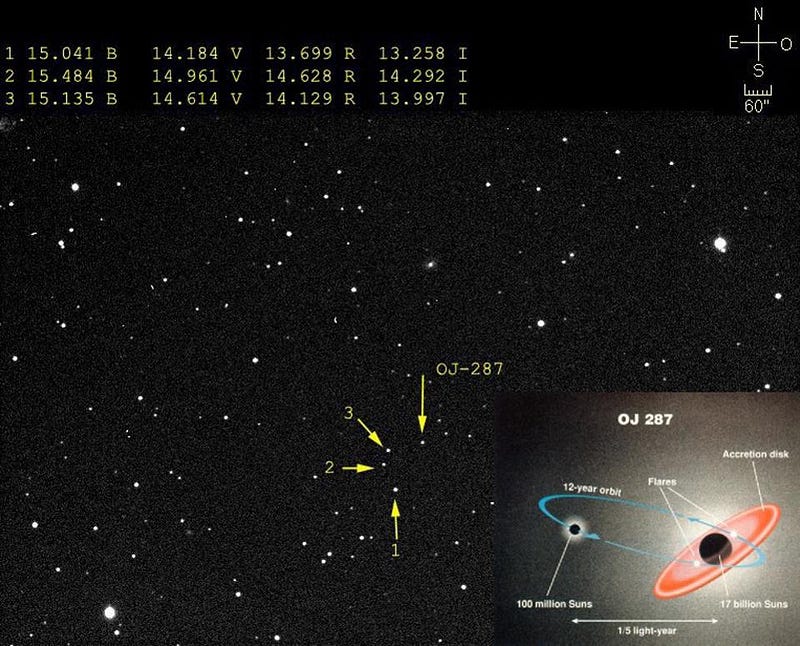
And finally, there are supermassive black hole pairs that exist in the Universe, where multiple large black holes eventually merge together, forming an even larger black hole. The largest known such pair, OJ 287, still has an 11–12 year orbital period, where a 100 million solar mass black hole orbits a 17 billion solar mass one. This is likely too long-period for LISA to see, but if there are tighter orbits that exist, where the period is only weeks or months, rather than years, LISA should be able to identify them.
The big takeaway is that an entirely distinct set of classes of objects — massive, periodic, and on longer timescales — will be able to be seen compared to what LIGO is sensitive to.
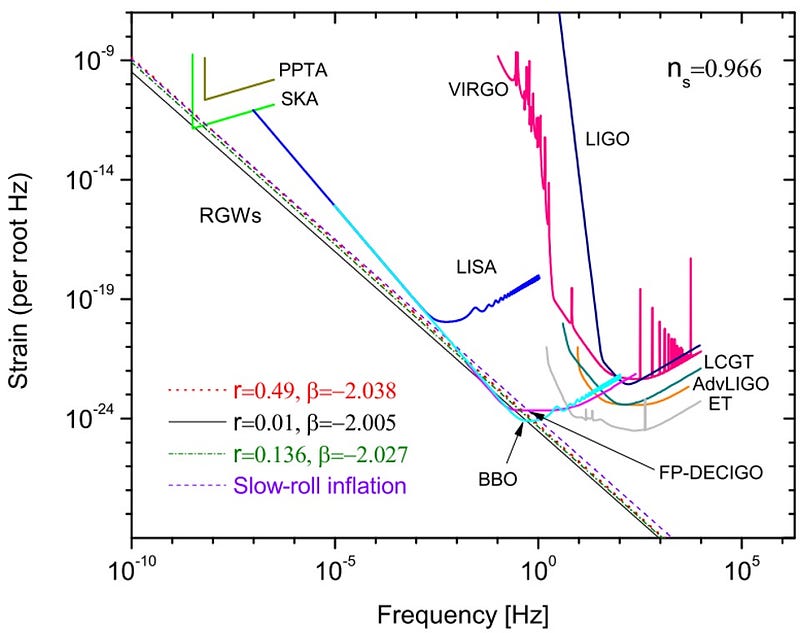
Whereas advanced LIGO, in orange, above, is only sensitive to gravitational wave events on timescales of under a second, LISA will be able to detect events ranging from many seconds to years. The advantage of being in space not only gets you a cleaner signal with no seismic noise, along with a free vacuum, but it gets you arms of an incredibly long baseline. The three spacecraft, working together by flying in formation, should easily achieve baseline distances of many tens of thousands, if not hundreds of thousands, of kilometers. Compared to the four kilometer LIGO arms, it’s truly an incredible feat to envision.
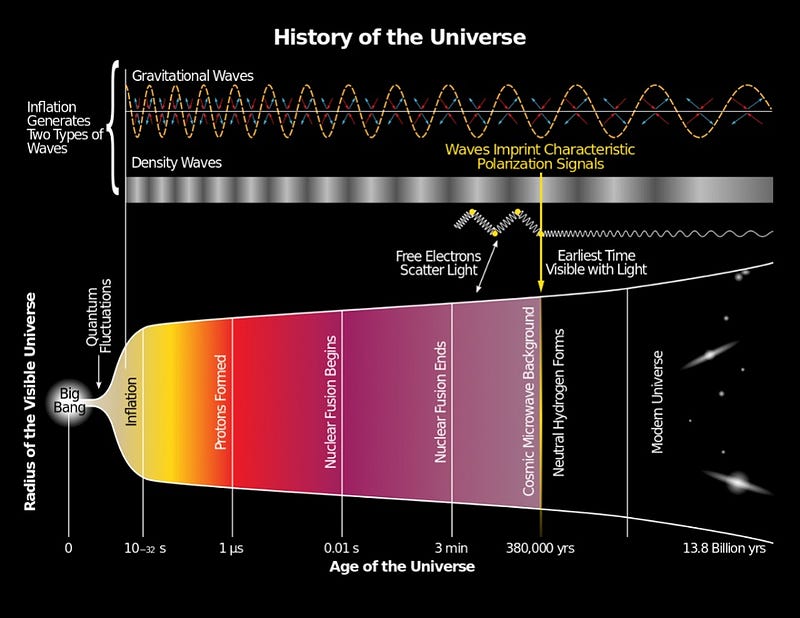
But even LISA won’t be able to see all the gravitational waves that there are. It won’t quite be sensitive enough, or at the right frequencies, to detect the leftover gravitational waves from cosmic inflation. These waves, the earliest signature from the moments of our observable Universe’s creation, ought to exist with a particular frequency and magnitude set that is imprinted from the first 10–33 seconds of the Universe. In order to detect these waves, we’d need something similar to LISA, but just a little more advanced: the proposed successor mission: Big Bang Observer.
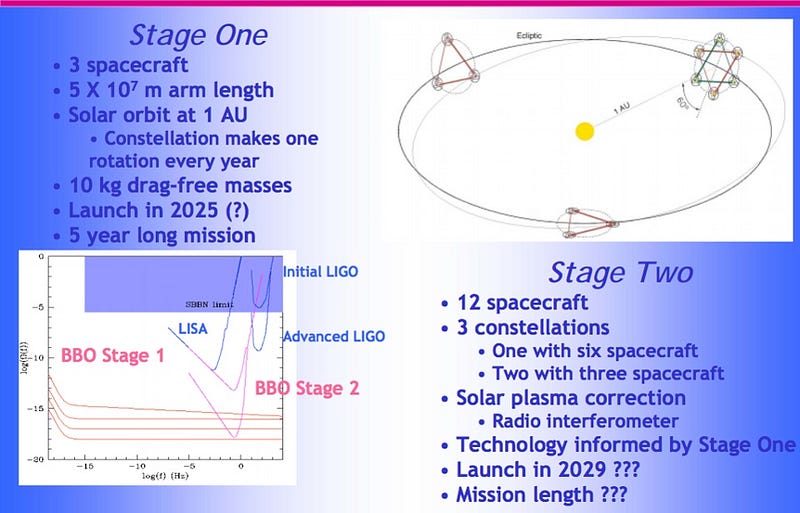
By setting up three (or four) of these LISA-style observatories at three different locations in Earth’s orbit around the Sun, we could detect the longest-period gravitational waves that there are. The ability to create a baseline that isn’t limited by the size of the Earth, but rather the Earth’s orbit around the Sun, will open up a myriad of unseen sources, including the ultramassive black hole pairs that will be invisible to LISA.
LISA was originally conceived as a potential NASA mission, but a series of cuts and choices to go in a different direction jeopardized the viability of LISA entirely. Thanks to the bold investment of the European Space Agency, LISA is slated to come to life in 2034. With any luck, it will be as big a leap forward for gravitational wave astronomy as the Hubble Space Telescope was for optical astronomy. The Universe is out there, and we’re poised to discover it as never before.
Ethan Siegel is the author of Beyond the Galaxy and Treknology. You can pre-order his third book, currently in development: the Encyclopaedia Cosmologica.




